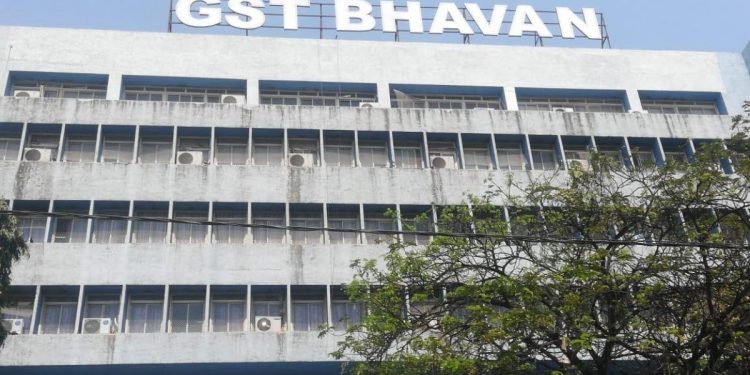Bharat Jhunjhunwala
Inter-state movement of goods was troublesome before the implementation of Goods and Services Tax (GST). Every state used to classify goods according to its understanding and collected Sales Tax at different rates. For example, kraft paper could be classified as “packing material” and taxed at 20 per cent by one state, while it could be classified as “paper” in another state and taxed at 25 per cent. These variations led to a number of disputes at the borders and hampered inter-state trade.
The Union government implemented a GST system which classified all goods in the same category and imposed the same rate of tax across the country. Businessmen no longer had to calculate the different rates of Sales Tax applicable in different states while making a sale.
However, the states were not willing to give up their autonomous power to levy Sales Tax as per their requirements. In order to overcome their resistance, the Union government assured them that it will compensate them for any shortfall in GST during the next five years. This compensation was to be calculated assuming a 14 percent increase in GST per year. The present problem is that the economy has been slowing for the last four years since the implementation of GST and thus the collections are less, while the Union government is committed to compensate the states at the rate of 14 per cent increase.
The Covid pandemic has pushed the matter to the brink. The Union government is unable to compensate the states as they were promised. A huge amount of `2.35 lakh crore has become due to the states. The Union government has made a scheme that it will borrow `1.1 lakh crore and pass on the loan to the states to help them meet their expenses during the delayed payment of compensation. However, the states will have to bear the interest burden on this loan.
This GST system has taken away the autonomy of the states. Previously every state had the authority to change the rate of Sales Tax. For example, Himachal Pradesh could collect higher rates on room heaters and Tamil Nadu on air conditioners which are bought more in the two states respectively. As a consequence, the states are caught in a bind. They cannot increase the GST rates in case they want to raise money, for example, to make a highway or a Metro.
The situation will become catastrophic for a number of states after the end of the five years when the Union government’s assurance to compensate for loss of revenue will come to an end. Reportedly, some states will see a sudden decline in their revenues by up to 40 per cent. They will not be able to even pay the salaries of their police and revenue personnel. The entire law and order situation in these states can crumble.
We should consider giving autonomy to states to fix the rates of GST. Several large countries provide such autonomy. Canada, for example, has three types of GST. Only 5 per cent “Federal” GST is collected on goods sold in Alberta. Five per cent “Federal” GST and 7 per cent Provincial States Tax (PST) are collected in British Columbia. The two taxes are combined and a 13 per cent Harmonized Sales Tax (HST) is collected in Ontario which includes a 5 per cent share of the federal government.
The movement of goods from one state to other remains seamless despite this multiplicity of GST rates. There are no border checks. The seller collects GST as applicable in the state of the buyer. For example, seller “A” in Alberta will collect only 5 per cent “Federal” GST on goods sold to a buyer within the state. The same seller “A” in Alberta will collect 5 percent “Federal” GST and 7 percent PST, a total of 12 per cent, on goods sold to a buyer “B” in British Columbia.
We can modify the present GST into such a system. A seller “X” in Maharashtra may collect 18 per cent GST on goods sold to a buyer within the state if Maharashtra does not impose a PST. The same seller “X” in Maharashtra will collect 18 per cent GST and, say, 2 per cent PST, a total of 20 per cent, on goods sold to a buyer “Y” in Andhra Pradesh if that state has a 2 per cent PST.
Now, let us say, the buyer “Y” in Andhra Pradesh sells those goods to a buyer “Z” in Odisha. In this situation, “Y“ will take a setoff of 20 per cent GST (18 per cent GST and 2 per cent PST) and collect 18 per cent GST and 7 per cent PST, a total 25 per cent from the buyer “Z“ in Odisha if the PST in Odisha is 7 percent. Such a system will restore the autonomy of the states to impose additional PST as per their requirement. At the end of five years, Punjab can impose, say, a five percent PST and save itself from bankruptcy.
Canada has gone beyond GST and provided autonomy to the states to levy Provincial Income Tax. Every state in Canada has autonomy to collect both GST and Income Tax as per its requirement. A similar system is in place in the United States. I know of a person who has changed her domicile from New Jersey to Florida to take advantage of lower rates of Provincial Income Tax in that state.
We must soon provide a similar autonomy to our states. This will eliminate the pressure on the Union government to continue compensating the states for any shortfall in GST beyond the five years committed earlier. It will restore the ability of the states to raise revenues to make water recharging structures, highways and metros.
The writer is a former professor of Economics at IIM, Bangalore.






































